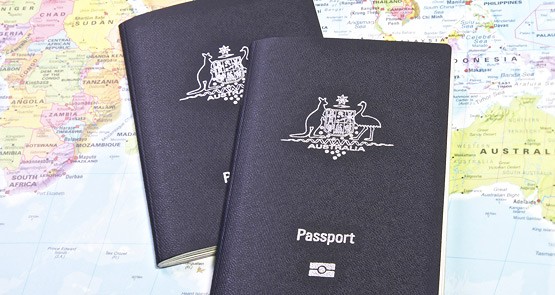The signing of the controversial Trans-Pacific Partnership this week and its frosty reception among economists raises an important question: if experts are ice-cold on its benefits, why on Earth do we get so many free-trade agreements? Who benefits?
Let’s answer that with another question: is there any Australian institution to whom the TPP is more valuable than the Department of Foreign Affairs and Trade? And would we really miss DFAT if we scrapped it?
The decline of conflict, rise of multilateral institutions and companies and the abundance of communication technologies make our historic foreign service architecture less and less relevant.
DFAT does useful things, sure. If you are 18 and lose your passport while drinking in Mexico City, the Australian Embassy at Ruben Dario 55 is there for you. But is that really the kind of strategic function that protects a department from the razor gang?
Much our diplomats do is questionable. Funding surfing scholarships in Peru (for Peruvians) is just one example.
If you’ve ever received a diplomatic cable — in one of my government jobs, I read hundreds of the cursed things — you know you’d almost always be better off with The New York Times. Rarely is anything important happening. But embassies and high commissions can’t be seen to be idle.
Diplomats write up, classify and dispatch the slightest development through highly secure networks. The department proudly reports that it sent 143,000 cables last year — roughly four per mission every day of the year.
This is not an exclusively Australian problem. Former British diplomat Carne Ross, in a widely read article, “It’s time to scrap Ambassadors and their embassies”, writes:
“[M]ethods of conventional diplomacy seemed almost deliberately constructed to separate the diplomat from reality — and also from the people diplomats claim to represent. By and large, diplomats speak to other diplomats. And thanks to ballooning bureaucracy, email, and security constraints, they are more and more confined to their embassies, dealing with the real world by computer and telephone rather than directly. Most foreign services are still horribly hierarchical, with the grey heads at the top and most of the energy and ideas ignored at the bottom. Few such institutions make the necessary effort (and it takes an effort) to encourage innovative and contrary thinking. Many of the diplomats I know feel frustrated and stultified by mounting bureaucracy, and some will admit to a creeping feeling of irrelevance. This wasn’t what they signed up for.”
The Lowy Institute points out that diplomats rarely leave their embassies these days.
The realisation embassies just aren’t delivering much anymore is dawning slowly.
Australia has closed missions in Prague and Algiers, among others. We share consular officials with Canada in a number of places.
Britain’s network of embassies most recent attempt to stay relevant is by pouring British gin at their cocktail parties. Calling themselves brand ambassadors is clever, but not quite a strategic investment.
In this environment, DFAT must manoeuvre skilfully to retain its pre-eminence — and its funding. All departments work to capture their ministers and turn them to advocates for departmental goals. DFAT, with its strengths in warm handshakes and smooth talk, does it better than most. Witness the speed with which Julie Bishop was converted to supporting Australia again having a seat on the UN Security Council.
Last time that cost an estimated $40 million, for limited benefit. But on we press.
The department has its uses, of course. It provides wonderful cover for our spies, and in the Washington embassy, a place for political enemies who — for appearance’s sake — must be killed softly.
Earlier this year, then-treasurer Joe Hockey approved a $230 million upgrade for the US embassy he will soon inhabit (or is it Tokyo?). Yes, you read that right — $230 million on a single embassy. That is why being demanding of DFAT is fair. They’re exceedingly demanding of us, the taxpayer.
The department spent $1.5 billion in the most recent year (this figure does not include aid disbursed by AusAID). Half its spending went on staff, working out at about $200,000 per lanyard.
So DFAT, sniffing the winds of budget stringency, shifts its agenda from the pure foreign affairs side of its bailiwick to trade. Here is a body of work where mandarins can deliver and convince ministers is crucial. The more foreign countries in a deal — the TPP has 12 — the more its networks appear crucial.
Never mind that experts at the Productivity Commission consider free-trade agreements to be of dubious merit, or that the World Trade Organisation has raised concerns about the influx of free-trade agreements causing “incoherence, confusion, exponential increase of costs for business, unpredictability and even unfairness in trade relations”.
This is not to argue Australia should cease governmental engagement abroad. We must be active. We should have an aid agency. And intelligence gatherers, drug police, immigration personnel, and Defence personnel on secondment. We should be represented at key multilateral forums. But ought these goals be entwined with an old-fashioned system staffed by career diplomats?
The world is not such a scary and difficult place that relevant departments can’t effectively make their own arrangements, and in some cases they already do. Treasury and Austrade offices are dotted round the globe.
In the hyper-connected 21st-century the bulk of relations between any two countries are not at the diplomatic level, but business to business, person to person, for travel and for education. The era of ambassadors is waning. Free trade agreements may be their last triumph.









Well you’ve convinced me. Shut DFAT down, it will save us heaps, give Julie more time with the boyfriend and the redundant staff can take up those jobs created by slashing the Sunday rates that are holding back this country.
I’ve been following trade negotiations since 1994 when I wrote a paper titled ‘CAN WE HAVE OUR GATTEAU AND EAT IT TOO ?’
I’m increasingly convinced that when Professor John Jackson invented the bicycle principle to describe trade negotiations (‘If you’re not moving forward you are probably falling off’) he actually had the negotiating staff of DFAT and their peers in every other country in mind.
This cohort spend their time discovering new areas of negotiations so they might continue to travel the world, meet up in exotic locations, and continue to hob-nob.
They are the real driving force behind the succession of deals the most recent of which is TISA, the Trade in Services Agreement, that was to be concluded this December but continues with no definite end in sight.
This piece has the whiff of ‘What have the Romans ever done for us?’ It turns out that Dfat does a lot according to the author: help citizens abroad, collects intelligence, distributes aid, polices drugs, handles immigration issues, seconds military and represents the country at key multilateral forums. And of course there’s a whole lot of other stuff overlooked by the author.
It’s a great question Jason, although Gavin didn’t quite catch it. Yes, they do those useful things, but that isn’t what the bulk of DFAT staff do.
You could slice half their staff, just leave those doing actual work rather than hob-nobbing and doing ineffectual trade agreements, and leave a better functioning DFAT.
Seems reasonable on a costs/benefits analysis.